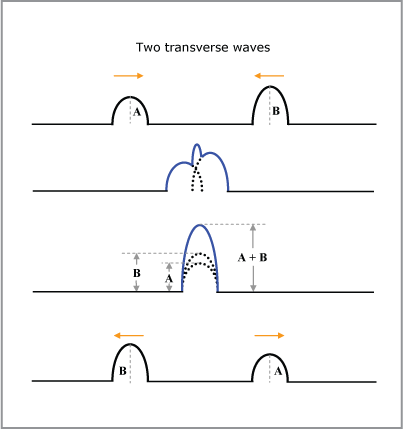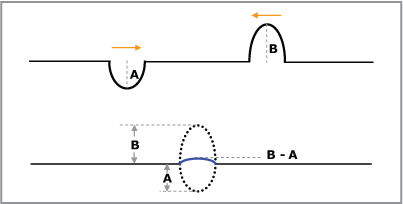Principle of superposition
One characteristic feature of a linear system is the principle of superposition. For mechanical waves the principle means that the amplitude of the resultant wave pattern created by the interference of travelling waves  , is the sum of the amplitudes of the travelling waves.
, is the sum of the amplitudes of the travelling waves.

At all times the travelling waves act independently of each other (eg ripples pass through ripples).
When two wave pulses overlap and positively contribute to the displacement of particles of a medium (see diagram below), the effect is termed constructive interference.

When two wave pulses overlap and negatively contribute to the displacement of particles of a medium (see diagram below), the effect is termed destructive interference.

If the two pulses had identical amplitudes (A = B) and widths then for a moment when they overlap, the particles of the medium are not displaced – the 'wave' appears 'flat'. In this situation the medium is said to be experiencing total destructive interference.





